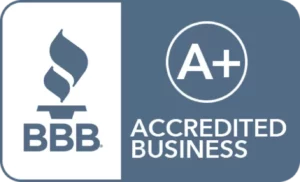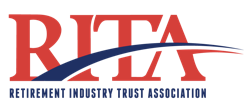A Coverdell Education Savings Account, also known simply as a Coverdell ESA, is a trust account established by the government to help families pay for qualified education expenses. A Coverdell ESA can be opened for anyone who is 18 or younger. However, the assets held in the plan must be withdrawn when the beneficiary has reached the age of 30. If the beneficiary has special needs, these age restrictions may be waived. Funds in the plan can go towards K-12 primary and secondary schools, in addition to higher education. The funds can be used towards many important education expenses, such as books and tuition.
How Does the Coverdell ESA Work?
A Coverdell ESA can be set up for all qualified beneficiaries. For example, if you have a son and daughter, ages 4 and 6, an ESA can be set up for each child. Unlike traditional retirement plans, such as an IRA or 401(k), contributions made to a Coverdell are not tax deductible. However, all withdrawals that are used to pay for qualified education expenses are tax-free. Any distributions from the account not used for educational expenses will be taxed at the beneficiary’s current tax rate. Generally, this is a lower tax rate than that of the contributor.
Funds in the plan are invested based on the contributor’s discretion. If the Coverdell ESA is opened at a traditional financial institution, your investments will be limited. Typically, you can only invest in traditional assets, such as stocks, bonds, and mutual funds. However, if you self-direct your ESA with IRA Financial, you can also invest in alternative asset investments, such as real estate and precious metals.
No matter which route you choose, your investments will grow on a tax-free basis. Instead of paying taxes annually on your holdings, the funds are shielded and are only paid on non-qualified withdrawals. For example, if you invest $10,000 and it grows to $50,000, the entire amount would be tax-free if used on education expenses.
What Are the Contribution Limits?
For 2024, you may contribute up to $2,000 for each of your beneficiaries. Again, if you have eligible children, you may contribute up to $2,000 for each child, every year until he or she reaches age 18. Further, unlike many other plans, other people may also contribute on your behalf. This may include grandparents and other relatives, friends, businesses, and the beneficiary him/herself. However, no matter who contributes, you cannot exceed the annual limit. There are income restrictions for who can contribute to an ESA. You may contribute if your income is less than $110,000 as a single filer or $220,000 for those filing a joint return. In addition, organizations, such as corporations, can help fund the plan.
If you start funding a Coverdell ESA as soon as your child is born, you may contribute approximately $36,000 to the plan. This is assuming the $2,000 annual limit does not rise in the future, which is unlikely. That might not seem like a lot, but if you generate a 7% rate of return, that amount will double by the time your child reaches 18. It will continue to grow until the funds are withdrawn from the account, which must occur by age 30.
Of course, any expenses paid out throughout the years will lessen the earning power of the plan. Therefore, funds should only be withdrawn when absolutely necessary. But so long as you have education expenses, you will have the ability to pay for them.
Taking Advantage of the Coverdell ESA
With the rising costs of education expenses, which start at preschool, it’s a smart idea to start saving as soon as possible. The Coverdell ESA allows for a tax-advantaged way to cover some of these expenses. It’s important to note that contributions are irrespective of retirement savings plans. An ESA may be used in conjunction with these plans to save more money with tax benefits.
There are a number of qualified education expenses the plan may be used for. These expenses can be found in detail on IRS Publication 970. Essentially, it covers tuition and fees, books and other supplies, computers and other technological products, tutoring, and in some instances, room and board. Lastly, ESA distribution must be less than the total amount of qualified expenses. If you withdraw too much, you will be penalized on the amount over these expenses.
As mentioned earlier, funds must be distributed from the plan once the beneficiary reaches age 30. Another perk of the ESA is that those funds can be transferred to a qualified family member of the beneficiary. By rolling over funds, you can avoid the tax consequences that arise. An ESA can be contributed on most closely related relatives including children, siblings, spouses, and first cousins, so long as he or she is under the age of 30.
Related: Self-Directed Coverdell ESA vs 529 Plan
The Self-Directed Coverdell ESA
Just like a Self-Directed IRA, a Self-Directed Coverdell ESA can be started, funded, and invested the way you want. Essentially, you can make any federally legal investment except life insurance, most collectibles, and any transaction involving a disqualified person. The most popular investments are real estate, precious metals, and surprisingly, cryptocurrencies. A broader investment menu will allow one to greater diversify his or her portfolio and allow for more stable investments and possible higher returns. Obviously, you must choose a custodian who will allow for such investments.
You have two options when choosing a Self-Directed Coverdell ESA – Custodian Controlled and Checkbook Control. While both allow for a wider assortment of investments, only a Checkbook Control Coverdell ESA will give you the freedom to invest in what you want, when you want.
Custodian Controlled Self-Directed Coverdell ESA
With a custodian-controlled Self-Directed Coverdell ESA, you can generally invest in most types of alternative investments. However, more exotic types of investments, like cryptos, may not be allowed. A custodian may not want its clients to take on too much risk. Obviously, if an investment goes wrong, it might be out of a client, and his or her funds. Therefore, you will need to ask for consent, or permission, before embarking on an investment. Consent might not come for a while. After all, custodians only work certain days with certain hours. This needless delay may cause you to lose out on a good deal.
Custodial Coverdell accounts are not without their merits. In fact, IRA Financial offers this option for all of our self-directed products. For those who do not make frequent purchases throughout the year, you may not need full control of the ESA funds. For example, a real estate investor who like to purchase “buy and hold” properties. If you don’t mind waiting for a custodian to vet your investment, this is a reasonable option for you.
Read IRA Financial’s Adam Bergman’s thoughts in his Forbes article.
Checkbook Control Self-Directed Coverdell ESA
If you want true freedom over your ESA funds, you must have checkbook control. As the trustee of the Coverdell, all investment decisions are in your hands. No custodian will ever say that you cannot make an investment because it is too risky. Assuming you are doing your due diligence, that shouldn’t be an issue. Further, since you are in control, funds are available to you 24/7. You simply have to write a check, use your debit card or wire funds to make a purchase.
Setting up a checkbook ESA is pretty straight forward. You need to create an LLC, then the Coverdell ESA. The ESA owns the LLC and is funded with a rollover or direct contribution. A bank account is created and funded with the Coverdell funds You, as the owner of the Coverdell and thus, the bank account, have complete control of the funds. You can make any type of investment you see fit.
Obviously, since you are in total control, you are the one making all the investment decisions. It’s up to you to do the homework on each investment you make. For example, if you are looking at a particular real estate investment to put some money into. Make sure it is sound and won’t go belly up! To ensure you are making the most of your money, it’s best to work with a qualified financial advisor.
Why Open a Self-Directed Coverdell Savings Account
A traditional Coverdell Savings Account will only allow you to invest in stocks, bonds, and mutual funds. However, with a Self-Directed Coverdell Savings Account, you can invest in almost anything. From real estate to cryptocurrency to traditional investments, the options are almost endless. A Self-Directed Coverdell Savings Account gives you the same benefits as a traditional Coverdell Savings Account with the ability to diversify your child’s education and invest in something you know and understand.
Related: Self-Directed IRA Rules
Conclusion
If you have, or are planning to have children, it may be in your best interest to start funding a Coverdell ESA. While the contribution limits are not substantial, the money will add up if you start early enough. Further, if you invest wisely, funds will grow much faster than in a regular savings account.
You may already have an emergency fund, retirement account, or even a Health Savings Account. Adding an ESA to the mix will help when your child starts going to school and the bills, from tuition to books, start adding up. As with any account, it’s important to work with a financial planner to make sure you are doing all you can do to further your child’s education.











